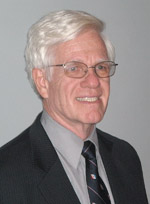Transformation and Tidewater
 |
Between 2001 and about 2005, the Office of Force Transformation (OFT) in the Office of the Secretary of Defense (OSD) focused on ways to shape the nature of military competition. The goal was to gain an enduring advantage for the
NATO’s Allied Command Transformation (ACT), whose title stimulates thoughts about what the term “transformation” means today, has contributed to a variety of studies since 2005 about the complex military picture. These studies, from the U.S. Joint Forces Command’s (JFCOM’s) Joint Operating Environment (JOE) to the ACT’s Multiple Futures Project (MFP), have pointed to complex, chaotic futures filled with surprises. Such environments are populated with “wicked” problems such as climate change, terrorism and failed states, which do not lend themselves to classical forms of analysis and for which there usually are no common definitions of the problem or agreements on the solution. Relations among participants in national security spaces are likely to reflect concurrent states of cooperation, competition and conflict, as opposed to neat transitions from one state to another. These uncertainties will be amplified by exponential technological change across several parallel scientific revolutions: information technology, biotechnology, nanotechnology, robotics, searches for alternatives to hydrocarbons and socio-cognitive research.
An enduring advantage of any sort is unlikely in these environments. The nation will need agility, endurance and resilience when surprised—as it inevitably will be.
We cannot address such futures with familiar, comfortable approaches. Neither are unilateral government solutions and unchanging courses of action likely to work. Instead, public-private, whole-of-government, transnational collaborative engagements offer more promise. The spectacular contributions of crowd sourcing and distributed collaboration in
A key question is how to design our institutions to take advantage of these conditions and how to develop leaders to lead them. Repeated studies show that organizations must flatten and decentralize, and that out-learning adversaries is essential to success. Leaders of such organizations need to be comfortable with uncertainty and ambiguity, and they must be committed to lifelong learning. Identifying and developing such leaders is a growing priority.
In this environment, education—preparation for the unknown—becomes a strategic asset for both the
Transformation in these conditions must be seen as a process that shapes the changing nature of competition and cooperation through concept development and innovation management across four dimensions: people, processes, organizations and technology. In the NATO context, some of the transformative work at ACT is helping to illuminate the roles of small nations within the alliance, understand hybrid and cyber challenges, develop capabilities for NATO’s Comprehensive Approach—which is comparable to U.S. concepts of complex, civil-military operations—and improve defense planning within the alliance. It also recognizes that future conflicts may not all be small wars.
Transformational concepts have come a long way—in only a few years—from trying to ensure an enduring
This month’s Joint Warfighting Conference brings many AFCEANs back to Tidewater and the great assembly of military capabilities there. Among these is the headquarters of ACT. This conference offers all attendees a chance to think about ways ahead in a rapidly changing world. They may or may not like the term transformation, but they need to acknowledge that today’s solutions will not solve tomorrow’s problems.
Linton Wells II is the transformation chair and a distinguished research professor at the National Defense University in Washington, D.C. The views expressed are his own and not those of the




Comments